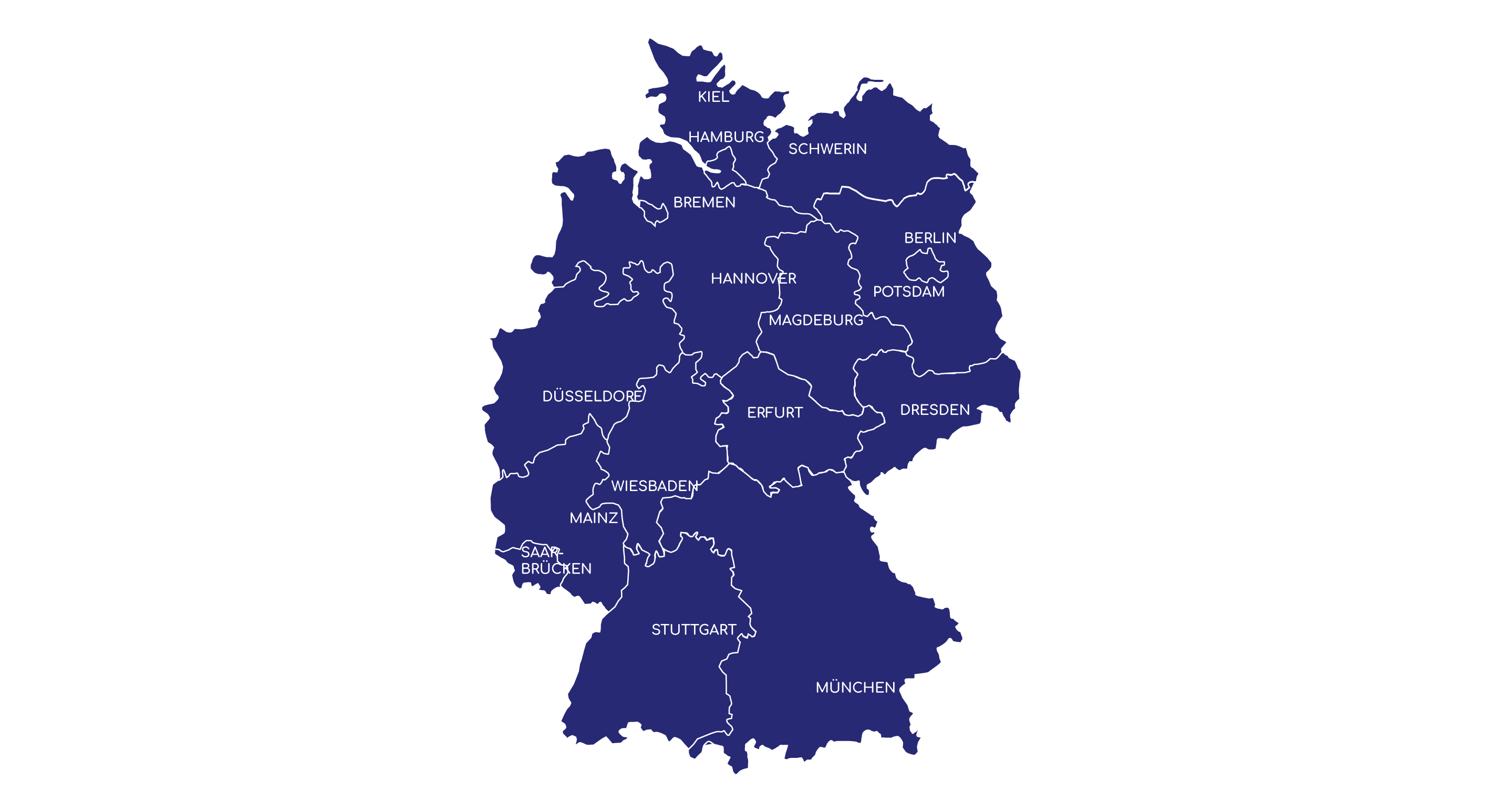Hammerich
Fedorova
Linkermann
Friedmann Angeli
Brabletz/Brabletz
Conrad
Bartelt
Boettcher
Esser von Bieren
Konrad
Götz
Westermann
Trumpp
Schulze
Muckenthaler
Dick
Methner
Brüne/Fuhrmann
Thiele
Wilhelm
Garcia Saez
von Karstedt
Luedde
Venkatarami
ALEXANDER BARTELT
Mechanisms of ferroptosis resistance in brown adipose tissue

Alexander Bartelt, LMU München
Alexander.Bartelt[at]med.uni-muenchen.de
Mechanisms of ferroptosis resistance in brown adipose tissue
We have discovered that ferroptosis is associated with remodeling of the ubiquitin-proteasome system via the transcription factor Nfe2l1 (1). Interestingly, brown adipocytes, thermogenic cells that naturally display unique oxidative metabolism are surprisingly resistant to ferroptosis and we will investigate Nfe2l1-mediated, anti-ferroptotic defense mechanisms in cultured adipocytes and transgenic mouse models under natural as well as under experimental ferroptotic conditions. Our results will determine the physiologic role of ferroptosis resistance for energy metabolism and systemic metabolic health exemplified here for adipocytes as a model system.
JAN BÖTTCHER
Role of ferroptosis for regulation of anti-cancer immunity by dendritic cells

Jan Böttcher, TUM München
Role of ferroptosis for regulation of anti-cancer immunity by dendritic cells
Dendritic cells are sentinel leukocytes with key roles in the initiation and regulation of immune responses. They have the ability to sense cell death in their environment and transmit this information to other leukocytes. In this project we aim to understand the mechanisms by which dendritic cells sense ferroptosis in the tumor microenvironment, how the interaction with ferroptotic cancer cells shapes dendritic cell function and to which extent this interplay impacts on anti-cancer immunity.
THOMAS BRABLETZ/SIMONE BRABLETZ
Zeb1-mediated control of the PUFA/MUFA ratio in EMT-associated ferroptosis sensitivity
Thomas Brabletz, FAU, Erlangen
Simone Brabletz, FAU, Erlangen
Zeb1-mediated control of the PUFA/MUFA ratio in EMT-associated ferroptosis sensitivity
In contrast to apoptosis, the predominant death signalling pathway in differentiated (e.g. epithelial) cells, ferroptosis can be induced mainly in undifferentiated cells and cells with a (partial) mesenchymal phenotype. In tumour cells, this phenotype is often acquired through the activation of an EMT, and is associated with high metastatic capacity and resistance to therapy. In this project, we will investigate the role of the EMT transcription factor Zeb1 for the expression of polyunsaturated fatty acids (PUFAs) and the associated ferroptosis sensitivity, and use it as a basis for new strategies against highly aggressive, therapy-resistant tumours.
BERND BRÜNE/DOMINIK FUHRMANN
Macrophages in sensing and executing ferroptosis

Bernd Brüne, Goethe-Universität Frankfurt
b.bruene[at]biochem.uni-frankfurt.de
Dominik Fuhrmann, Goethe-Universität Frankfurt am Main
fuhrmann[at]biochem.uni-frankfurt.de
Macrophages in sensing and executing ferroptosis
Ferroptosis is characterized by lipid peroxidation and its iron dependency. Whereas several tumor cell lines are highly vulnerable to ferroptosis inducers, primary human macrophages are basically inert to this form of regulated cell death. Pilot data show that hypoxia as well as RSL3 increase the expression of iron storage proteins in macrophages such as ferritin heavy (FTH), iron export proteins, i.e. ferroportin (FPN) and ceruloplasmin (CP), which causes iron oxidation and export. We hypothesize that the increased ability to store or export iron protects macrophages from ferroptosis. Experimentally, we alter the ability of macrophages to store and/or export iron by knocking down FTH, FPN, and/or CP to increase their ferroptosis vulnerability. The relationship between iron storage and the ability to enter ferroptotic cell death pathways will be analyzed under hypoxia vs. normoxia as well as for classically vs. alternatively polarized macrophages, because these conditions are known to alter cellular iron metabolism. In the tumor microenvironment, macrophages may deliver iron to tumor cells and support their growth. We hypothesize that this ability sensitizes tumor cells to ferroptosis. We will test our hypothesis in 3D tumor models using wild-type macrophages compared to cells with an attenuated ability to deliver iron to tumor cells. Referring to the ability of macrophages to increase iron storage and thus, to gain ferroptosis resistance under hypoxia, which naturally occurs in 3D tumor models, macrophages with a knockdown of FTH, FPN, or CP will be used in 3D culture with the intention to kill not only tumor cells but also macrophages by ferrroptosis. The professional phagocytotic capacity of macrophages makes them the primary cell to move to, to recognize, and to ingest dying cells, respectively to respond to signals generated by dying cells. This is of particular importance in the tumor microenvironment, where dying tumor cells shape the phenotype of macrophages. At present it is largely unknown how ferroptotic cells interact with macrophages. Thus, we analyze how ferroptotic cells signal towards macrophages and study “find-me”, “eat-me”, and “don’t eat-me” signals of ferroptotic cells by using lipidomics, metabolomics, and proteomics. By these methods, we intend to unravel alterations in redox signaling cascades, in the secretome of ferroptotic cells, and finally their implications on macrophages. This will be followed in 2D and 3D culture using spheroids and organoids with monocytes/macrophage infiltration to mimic a preclinical relevant tumor model. We aim at investigating how macrophages regulate their sensitivity to ferroptosis by adjusting iron metabolism and how ferroptotic tumor cells polarize macrophages. Understanding these basic mechanisms will be critical to propose ferroptosis as a tool for tumor therapy.
MARCUS CONRAD
Development of a lipid-based ferroptosis biomarker for the study of neurodegenerative disease

Marcus Conrad, Helmholtz Zentrum München
marcus.conrad[at]helmholtz-muenchen.de
Development of a lipid-based ferroptosis biomarker for the study of neurodegenerative disease
Ferroptosis is a metabolic form of cell death characterized by iron-dependent lipid peroxidation. Emerging evidence suggests that ferroptosis underlies numerous degenerative diseases including tissue ischemia/reperfusion injury and certain neurodegenerative diseases. Although key players of ferroptosis and ferroptosis modulating agents have been identified in recent years, a robust lipid-based ferroptosis biomarker is still lacking. Thus, we will perform a comprehensive and comparative (epi)lipidomics analysis of mice lacking GPX4 in distinct neuronal subpopulations of the brain and of samples from patient suffering from neurodegenerative disease. The identification and validation of a lipid-based ferroptosis-specific biomarker will be key not only in understanding the role of ferroptosis in neurodegenerative disease progression, but also essential for measuring therapy success using novel ferroptosis-based pharmacotherapies currently under development.
TOBIAS D. DICK
Regulation of lipid peroxidation and ferroptosis by per- and polysulfides

Tobias D. Dick, DKFZ Heidelberg
Regulation of lipid peroxidation and ferroptosis by per- and polysulfides
This project will explore possible connections between sulfane sulfur species (per- and polysulfides), lipid peroxidation and ferroptosis. Cells produce per- and polysulfides endogenously, by several enzymatic pathways and mechanisms, especially when they are under oxidative stress. Numerous studies, including our own, support the notion that sulfane sulfur species exhibit significant anti-oxidative and cytoprotective properties. We aim to investigate the hypothesis that biologically relevant sulfane sulfur species protect membranes against lipid peroxidation, and thus modulate ferroptosis sensitivity.
JULIA ESSER-VON BIEREN
Regulation of ferroptosis in type 2 immune responses

Julia Esser-von Bieren, TUM München
Regulation of ferroptosis in type 2 immune responses
Type-2 immune responses drive inflammation (e.g. in asthma) or host defense (e.g. during infection with helminth parasites. Type-2 immunity is typically associated with tissue damage, caused e.g. by helminth larvae or protease allergens. Ferroptosis, a form of programmed oxidative cell death, is involved in tissue injury, but its involvement and regulation in type-2 immunity are poorly understood. Type-2 immune responses are instrumental for tissue repair, suggesting that ferroptosis has to be tightly regulated in order to prevent excessive damage. Our project aims at characterizing mechanisms of ferroptosis regulation in different setting of type-2 immunity.
MARIA FEDOROVA
Understanding dynamics of lipid metabolism and oxidation in ferroptotic cell death programme

Maria Fedorova, Technical University of Dresden
maria.fedorova[at]tu-dresden.de
Understanding dynamics of lipid metabolism and oxidation in ferroptotic cell death programme
Numerous studies clearly established that lipid metabolism and specific composition of cellular and tissue lipidomes determine ferroptosis sensitivity or resistance. To this end, a deeper understanding of lipid metabolism and oxidation at lipid species molecular level is required to predict ferroptosis sensitivity and propose relevant metabolic pathways as a potential pharmacological targets for pro- and anti-ferroptotic therapies. The proposed project aims to expand current understanding on the role of lipid metabolism in ferroptosis by mapping dynamics of lipidome remodeling and oxidation upon induction and execution of ferroptotic cell death at cellular and subcellular levels, and exploring modulatory potential of lipid metabolism by targeting lipid class and type specific pathways.
JOSÉ PEDRO FRIEDMANN ANGELI
Selenocysteine metabolism as a new target for ferroptosis induction

José Pedro Friedmann Angeli, Universität Würzburg
pedro.angeli[at]virchow.uni-wuerzburg.de
Selenocysteine metabolism as a new target for ferroptosis induction
Targeting the selenoprotein GPX4 has attracted considerable interest for the treatment of therapy refractory tumours. Yet, specific properties of the enzyme have hindered the development of pharmacological strategies for the induction of GPX4-based ferroptosis. In the present application we propose to explore the metabolism of the rare amino acid selenocysteine (Sec) to indirectly influence the activity of GPX4. Using a mixture of in vitro and in vivo models in combination with genetic screenings, we aim to identify critical mechanism of Sec mobilization and establish novel targets for the induction of ferroptosis.
ANA J. GARCIA SAEZ
Membrane alterations in ferroptosis: from lipid oxidation to pore formation
Ana J. Garcia Saez, CECAD Köln
Membrane alterations in ferroptosis: from lipid oxidation to pore formation
The overarching goal of this project is to understand how lipid peroxidation triggers plasma membrane permeabilization leading to cell death. We previously found that the final step of ferroptosis execution involves the opening of nanopores at the plasma membrane that cause sustained high cytosolic calcium and cell swelling prior to cell death (Pedrera et al., 2019). Building on these results and our expertise on characterizing membrane permeabilization mechanisms in regulated cell death, we will determine the alterations in the biophysical properties of cellular membranes in ferroptotic cells using advanced microscopy and biophysical tools. We will then validate the functional relevance of previously known and newly identified lipid species for ferroptotic death and relate them to the membrane alterations identified . The expected outcome of this research will advance our molecular understanding of ferroptosis by establishing a mechanistic link between lipid peroxidation and execution of cell death.
MAGDALENA GOETZ
Mechanisms of ferroptosis in direct neuronal reprogramming

Magdalena Götz, LMU, Helmholtz Zentrum München
magdalena.goetz[at]lrz.uni-muenchen.de
Mechanisms of ferroptosis in direct neuronal reprogramming
Direct neuronal reprogramming is a promising novel route towards neuronal replacement therapies, as it aims at converting endogenous glial cells into functional neurons both in vitro and in vivo. However, during the process, cells undergoing reprogramming increase ROS production and succumb to ferroptosis-induced cell death. In this project, we investigate the molecular mechanisms triggering ferroptosis in murine and human glial cells during the conversion process in order to identify new ways to prevent ferroptosis. This will lead towards improving the direct conversion of murine and human astroglia into functional neurons in vivo.
LINDA HAMMERICH
Harnessing the immunogenic potential of ferroptosis to improve immunotherapy in liver cancer

Linda Hammerich, Charité Berlin
Harnessing the immunogenic potential of ferroptosis to improve immunotherapy in liver cancer
Ferroptosis might be more immunogenic than other types of programmed cell death, which could prove beneficial in cancer treatment. We aim to study the immunogenicity of ferroptosis in the context of primary liver cancer, where more efficient therapies are urgently needed. We propose that ferroptosis of hepatic tumor cells can induce a tumor-specific immune response and thereby increase the (currently insufficient) efficacy of immunotherapy in liver cancer. We will characterize the mechanisms by which ferroptosis elicits an immune response in preclinical mouse models as well as using human samples from patients with liver cancer to facilitate the translation of the results to clinical trials.
SILVIA VON KARSTEDT
Consequences of cPLA2α-mediated ferroptosis regulation in small cell lung cancer (SCLC)
Silvia von Karstedt, CECAD Köln
Consequences of cPLA2α-mediated ferroptosis regulation in small cell lung cancer (SCLC)
Small cell lung cancer (SCLC) is amongst the most aggressive forms of lung cancer with a very poor survival rate due to rapidly emerging chemotherapy resistance. Recently, we identified non-neuroendocrine (non-NE) SCLC to be exquisitely sensitive to ferroptosis due to a rewired lipidome. Interestingly, in this subtype we find elevated expression of cytosolic phospholipase2 α (cPLA2α) and its inhibition to block ferroptosis induction. Therefore, as part of this consortium we aim to comprehensively characterise the role of cPLA2α in regulating ferroptosis and cancer-associated inflammation in SCLC.
DAVID KONRAD
Substitutive Chemotypes as Tools for the Selective Induction of Ferroptosis in Cancer Cells

David Konrad, LMU München
Substitutive Chemotypes as Tools for the Selective Induction of Ferroptosis in Cancer Cells
Our group is investigating methods to selectively induce ferroptosis in cancers. As part of our SPP project, we aim to establish a new approach for the development of cancer cell-specific prodrugs that harness the activity of mutation-selective anticancer drugs to activate GPX4 inhibitors in Non-Small Cell Lung Cancer.
ANDREAS LINKERMANN
Steroid Hormones as Regulators of Ferroptosis Sensitivity

Andreas Linkermann, Universität Dresden
andreas.linkermann[at]uniklinikum-dresden.de
Steroid Hormones as Regulators of Ferroptosis Sensitivity
Dexamethasone and other steroid hormones are widely used drugs in autoimmune diseases or the prevention of transplant rejection. Side effects limit the applicable dosage of steroids, but no conclusive mechanism of action has been described to explain the untoward functions. We provide preliminary data for dexamethasone to lower the threshold to ferroptosis in cell culture assays. We aim to characterize the pro-ferroptotic effect of steroid hormones in cell lines in more detail and assess ferroptosis regulation by steroid hormones in primary renal tissue. We will finally elucidate the role of steroid hormones on AKI in mice and clarify the underlying mechanism.
TOM LUEDDE
How ferroptosis and ferroptosis-response-pathways shape the immune landscape in pancreatic ductal adenocarcinoma (PDAC)
Tom Luedde, Universität Düsseldorf
tom.luedde[at]med.uni-duesseldorf.de
How ferroptosis and ferroptosis-response-pathways shape the immune landscape in pancreatic ductal adenocarcinoma (PDAC)
AXEL METHNER
Crosstalk between ferroptosis and sarmoptosis
Axel Methner, Johannes Gutenberg-Universität Mainz
Crosstalk between ferroptosis and sarmoptosis
Ferroptosis causes a specific form of iron-dependent programmed cell death characterized by glutathione depletion, inhibition of glutathione peroxidase 4 and lipid peroxidation that is finally executed by a fatal dysregulation of Ca2+ homeostasis. We hypothesize that this process consumes the cofactor NAD+ which then triggers another pathway of programmed cell death distinct form ferroptosis coined sarmoptosis. This pathway is active in degenerating axons severed from their cell bodies. In this project, we will study hallmarks of sarmoptosis in ferroptosis, we will clarify whether inhibiting sarmoptosis protects against ferroptosis and will elucidate the relevance of ferroptosis for the execution of axonal degeneration.
MARTINA MUCKENTHALER
Mechanisms of organ resistance and susceptibility to ferroptosis in a disease model of iron overload

Martina Muckenthaler, Universität Heidelberg
Martina.Muckenthaler[at]med.uni-heidelberg.de
Mechanisms of organ resistance and susceptibility to ferroptosis in a disease model of iron overload
Ferroptosis is defined as an iron-dependent form of regulated cell death leading to the lethal accumulation of lipid-based reactive oxygen species (ROS). The aim of our project is to understand how iron impacts on ferroptosis and viability in a mouse model of iron overload disease. We aim to identify mechanisms that protect or sensitize organs for iron-induced damage. We will compare molecular signatures of iron-induced ferroptosis with “classic” ferroptosis. The results will help to determine which of the anti-ferroptosis therapies currently in development may be applicable to prevent tissue damage in iron overload disorders.
ALMUT SCHULZE
Modulation of ferroptosis sensitivity by altered lipid metabolism in cancer
Almut Schulze, DKFZ Heidelberg
almut.schulze[at]dkfz-heidelberg.de
Modulation of ferroptosis sensitivity by altered lipid metabolism in cancer
Ferroptosis plays an important role in cancer, as the activation of oncogenic signalling pathways and the enhanced metabolic activity of cancer cells causes oxidative stress that leads to enhanced peroxidation of PUFA-containing lipids. PUFA are precursors of lipid mediators to promote migration, angiogenesis and immune evasion, making cancer cells highly dependent on mechanisms that prevent ferroptosis. Consequently, triggering ferroptosis could be a promising strategy for cancer treatment.
We are studying how oncogene-driven alterations in lipid metabolism affect ferroptosis sensitivity in cancer cells and how this is affected by different metabolic microenvironments to uncover novel mechanisms of ferroptosis regulation and identify potential targets for therapeutic intervention.
CHRISTOPH THIELE
Dynamics of lipid metabolism in ferroptosis
Christoph Thiele, Universität Bonn
Dynamics of lipid metabolism in ferroptosis
People involved:
ANDREAS TRUMPP
Characterization and exploitation of novel ferroptosis regulators to target MYCN amplified cancers

Andreas Trumpp, DKFZ Heidelberg
Characterization and exploitation of novel ferroptosis regulators to target MYCN amplified cancers
VIVEK VENKATARAMANI
Molecular Exploitation of Amyloid Precursor Protein as Novel Ferroptosis Regulator
Vivek Venkataramani, Universität Würzburg
Molecular Exploitation of Amyloid Precursor Protein as Novel Ferroptosis Regulator
APP is widely known as precursor of neurotoxic Ab in Alzheimer disease (AD). However, the physiological function of the full-length protein is still debatable. Herein, we show that oncogene-mediated malignant transformation can induce APP biosynthesis. This confers an adaptive survival advantage for cancer cells, likely by preventing a pro-ferroptotic state. Moreover, APP is commonly overexpressed in various aggressive tumor types correlating with poor prognosis, and thus may represent an attractive target for cancer therapy. Mechanistically, loss-of-APP results in mitochondrial translocation and enzymatic activation of heme oxygenase-1 (HO-1). Systematic analysis of downstream pathways identified the heme-regulated transcription factor BACH1 as a central node that controls responses to oxidative stress and simultaneously enforces glycolytic energy supply resulting in polyunsaturated fatty acids (PUFA) accumulation. Our data demonstrate that inhibition of APP expression enhances BACH1-mediated ferroptosis, which significantly contributes to suppression of tumor growth and metastatic colonization in vivo. Thus, APP and APP-dependent downstream pathways offer new potential therapeutic targets to modulate ferroptosis-induced tumor suppression and other ferroptosis-disease-relevant settings.
FRANK WESTERMANN
Ferroptosis induction as a novel treatment concept for relapsed childhood cancers
Frank Westermann, DKFZ Heidelberg
f.westermann[at]kitz-heidelberg.de
Ferroptosis induction as a novel treatment concept for relapsed childhood cancers
A substantial number of cancer cells are susceptible to ferroptosis. The lack of a more mechanistic understanding of this process yet precludes a systematic exploitation of this vulnerability as a therapeutic modality for cancer. Using childhood neuroblastoma as a model, we found that high MYCN oncoprotein activity induces addiction to the amino acid cysteine, and sensitizes to ferroptosis. The main research goal of this project is to develop a mechanistic model that rationalizes the impact of cyst(e)ine uptake, cysteine synthesis via transsulfuration and cysteine catabolism on the activity of the glutathione-GPX4 system controlling ferroptosis in ferroptosis-sensitive vs. resistant cancer cells.
CHRISTOPH WILHELM
The potential of ferroptosis as treatment of allergic airway inflammation

Christoph Wilhelm, Universität Bonn
The potential of ferroptosis as treatment of allergic airway inflammation
Innate lymphoid cells (ILC) serve the major task of protection and maintenance of the tissue barrier. However, chronic activation of ILC2, can promote inflammation and contribute to the development of asthma. This process is fueled by the acquisition of external lipids, which may render ILC2 susceptible to ferroptosis, a newly identified form of cells death. Studying the pro- and anti-ferroptotic pathways in ILC2, we aim to unravel the function of ferroptosis in the development and progression of chronic airway inflammation and asthma.








